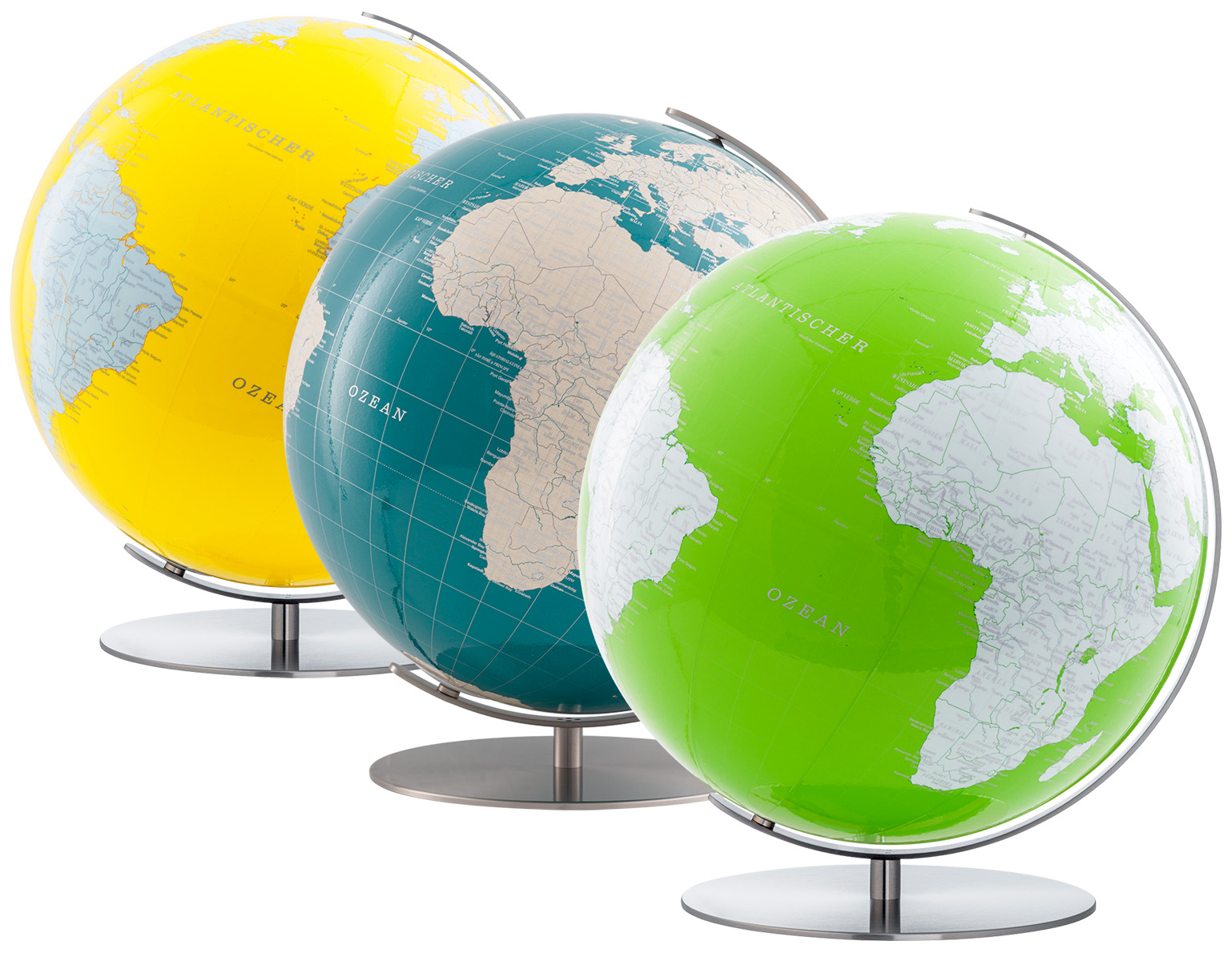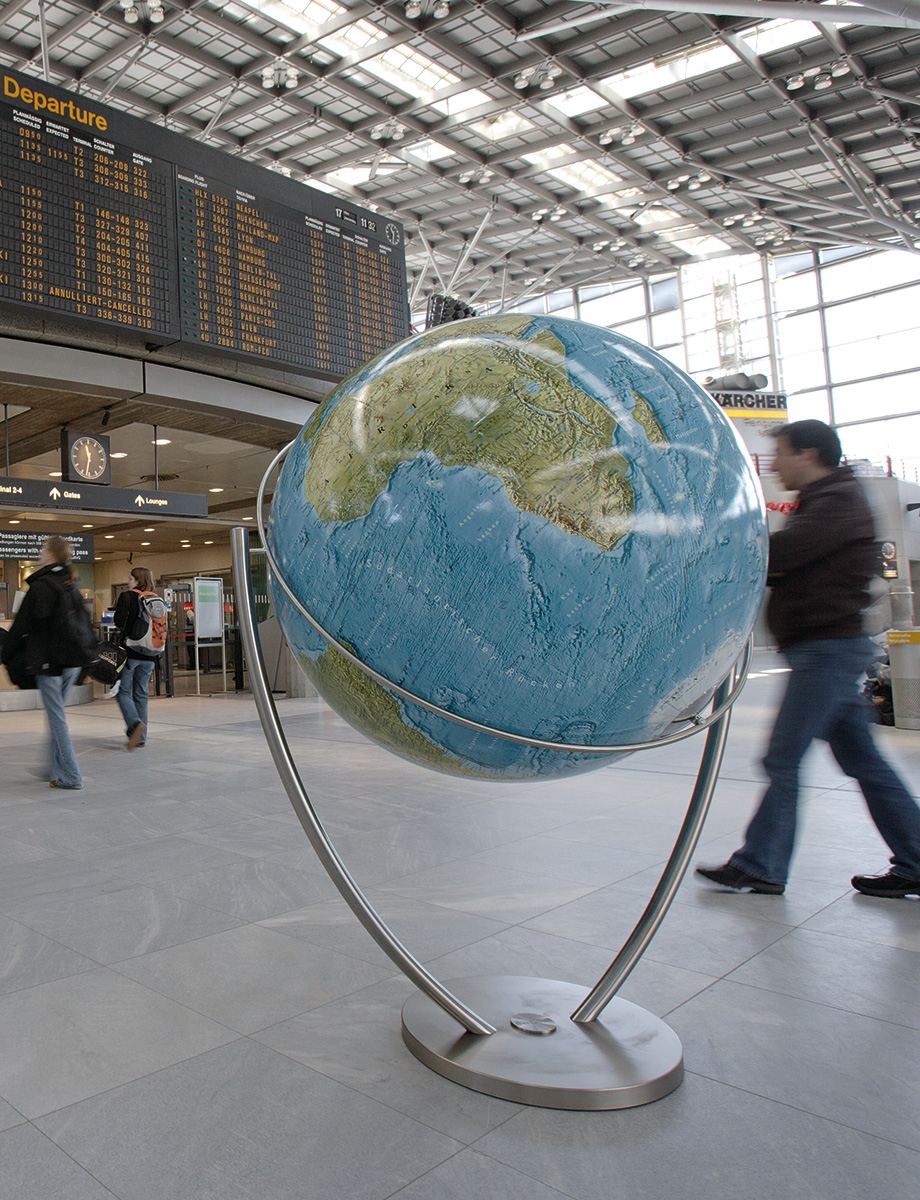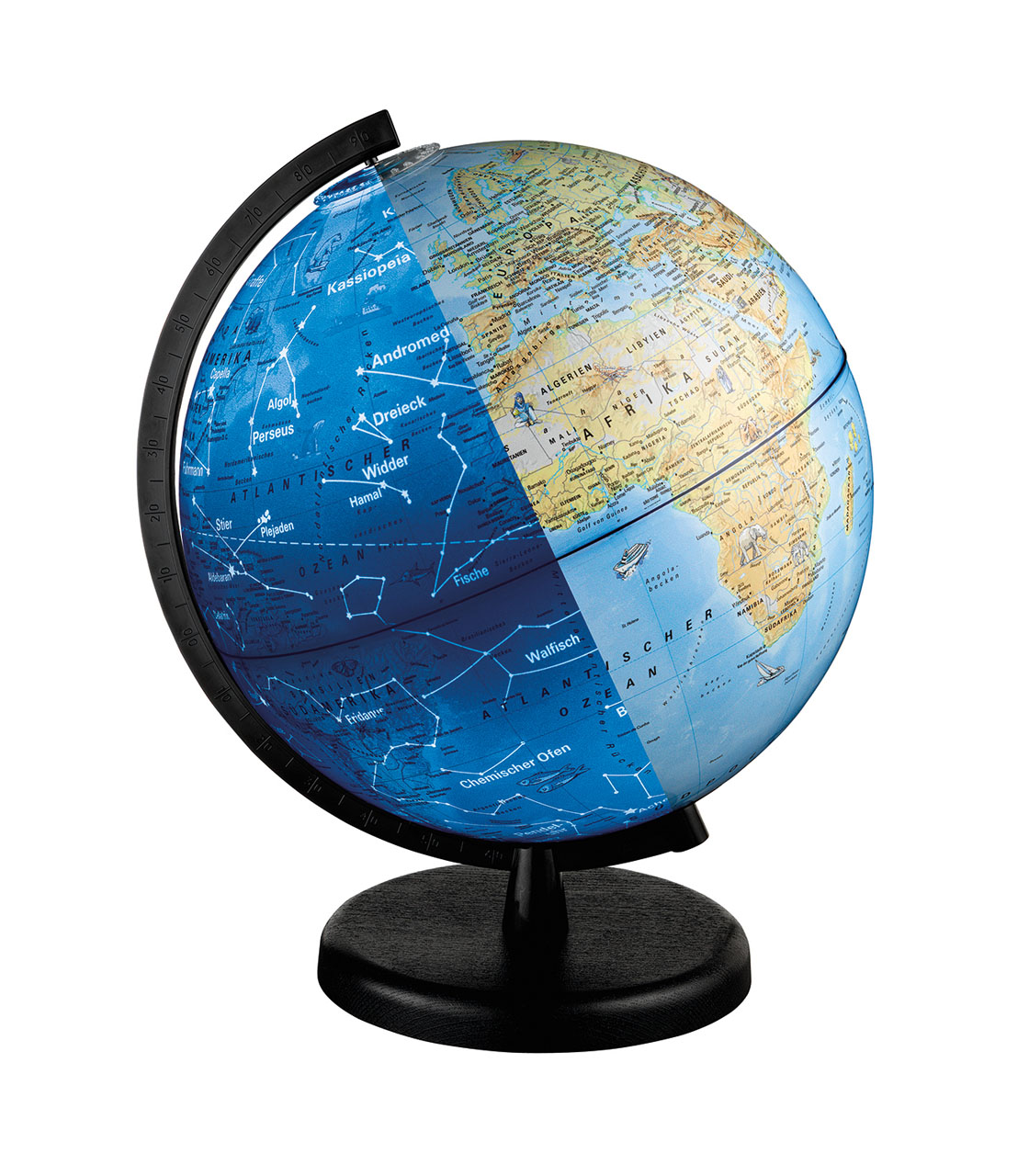History
Since 1909 we manufacture globes
- by hand and with passion, now in the 5th generation.
COLUMBUS is a motor of innovation. Progress and tradition have always gone hand in hand. Be it the production of illuminated globes, the DUO map with two maps on one globe, duplex globes in vacuum-forming technology or the preservation of hand-coating, free-floating globes in the magnetic field or the Explorer Pen and interactive surfaces.
A look back at 115 years of company history.

1909

Berlin-Schöneberg
Since 1904, the brothers Paul and Peter Oestergaard have been producing globes in Berlin. In 1909, they found the COLUMBUS publishing house in the Schöneberg district of Berlin with the aim of »A Columbus globe in every home«. Their idea: mass production from cardboard with hand-coated maps, which suddenly makes the globes cheaper.
Their idea is a great success:
By 1919, they produce globes in 24 languages and export as far as China. The company expands into larger production halls.
1919



1920s

Top Seller
The next top seller is ready:
COLUMBUS helps the illuminated glass globe achieve widespread use - and
revolutionizes the globe production.
COLUMBUS Large Globes
COLUMBUS globes are in great demand, especially the representative "Columbus-Großglobus für Staats- und Wirtschaftsführer", with an aluminum sphere of more than one meter in diameter, is very popular from 1935 on. Furthermore, the history of the globe is close to COLUMBUS' heart. Between 1938 and 1942, the company produces unique copies of valuable globes, including the Behaim globe (1492), the Brixen globe (1523), and the Anich globe (1759).
1930s



1940s

Reconstruction
In 1943, the administration and production facilities at the Tietzenweg site are destroyed in the war. After relocation to neighboring sites and to the family's private home, and the first reconstruction in Berlin, a new plant is founded in Beutelsbach near Stuttgart with the remaining workforce after the Russian blockade in 1948.
The DUO-Principle
COLUMBUS develops the DUO-Principle. Thanks to Villinger's and Oestergaard's patent, illuminated globes display two maps simultaneously for the first time - one when illuminated, the other when not. These globes set a completely new industry standard.
1950s



1965

DUPLEX
1In 1963, the grandson of the founder, Peter Oestergaard, takes over the management of the company. Two years later, the DUPLEX models finally make globes affordable for everyone. The further development of vacuum-forming technology of plastics and the necessary adaptation of halftone printing enable the machine production of globes with nevertheless highest precision and imaging quality.
PLANET EARTH
The DUO-Principle is taken a step further: PLANET EARTH - the first day-and-night globe captivates through the representation of the physical image of the earth on the one hand, and its relationship to the sun on the other. It shows sunrises and sunsets, twilight zones, and seasons.
1972



1989

The Reunification
The year of major global political changes is also a turning point for the worldwide map and globe production. Sales in the industry collapse: Map material is abruptly outdated, updates barely keep pace with developments. The company decides to move to Krauchenwies in 1993. In 1994, Peter Oestergaard's son Torsten joins the company and takes over the fortunes of the publishing house. The entire cartography is now digitized step by step.
The ARTLINE brings color to the world of globes
The globe becomes a work of art. Metal particles in the printing ink provide a shimmering gleam to the lines and letterings, while base colors such as pink, green, orange, and steel blue create a monochromatic feel-good factor.
1994



2000

Floating Globes
And another innovation: In 2000, COLUMBUS presents the world's first
floating globe at the Book Fair - a globe that rotates freely in a magnetic field.
MAGNUM Globes
In the 2000s, COLUMBUS continues to think big: The world's largest mass-produced globes - the MAGNUM series - their globe spheres measuring up to two meters in diameter represent the world with
unprecedented accuracy.
2000s



2011

Digital Surface
COLUMBUS surprises the public at the 2011 Book Fair with its "talking globe".
An "Explorer Pen" calls up information stored on the surface of the globe and
reports on the country and its people.
4D Globe-App
One year later, COLUMBUS launches the first "4D Globe"-App. Now, customers can use their smartphone or tablet to have the weather data of metropolises worldwide float in a fourth dimension above the globe as if by magic.
2012



2015

Explorer Pen with video function
Niklas Oestergaard, now the fifth generation at COLUMBUS, continues to develop the Explorer Pen. Films and images of the respective areas can now be shown on all mobile devices and smart TVs.
COLUMBUS and KOSMOS enter into a close partnership:
In addition to the production of a children's globe for the long-established science company, our decade-long expertise in the field of plastic injection molding technology forms the basis for the production of game pieces for the world-famous CATAN games from domestic production.
2017




